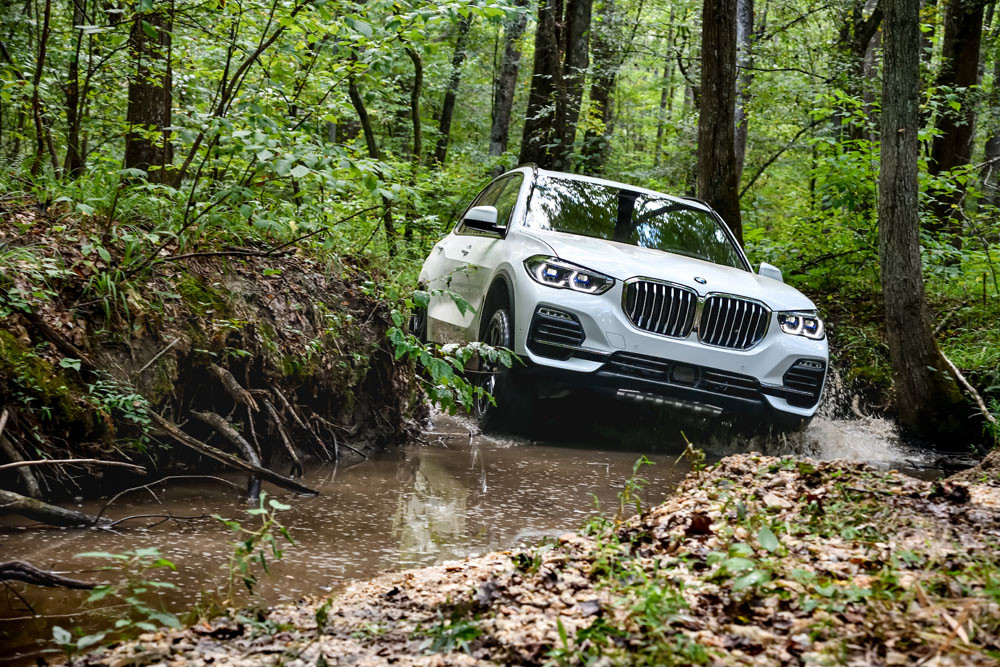General News
13 October, 2024
Trailblazer 25 years young
IT BURST on to the market and partied like it was, well, 1999.

We’re talking about the BMW X5, which, 25 years ago became an instant hit and market leader in a new Sports Activity Vehicle (SAV) segment.
Clocking up more than three million sales worldwide, and a tidy 75,000 in Australia since it first landed on our shores in 2000, it ranks second only to the BMW 3 Series in the manufacturer’s stable, according to national VFACTS data.
Now in its fourth model generation, the BMW X5 has long been celebrated for its elegant, luxurious, yet functional interiors; responsive powertrains and sports car-like driving dynamics. And when it offered a diesel engine and manual gearing, the Aussies lapped it up.
The first X5, debuted at the North American International Auto Show in 1999 showcasing a classic BMW styling, responsive in-line six and potent V8 petrol engines, an all-wheel-drive system for multi-surface adventures and a monocoque chassis.
Eight years later, the second-generation BMW X5 offered more space, including provision for a third row of seats. It also debuted the celebrated BMW iDrive system as part of a major upgrade to the interior, alongside a high-definition, centre-mounted display.
Other innovations in 2007 included Active Steering for better manoeuvrability and the AdaptiveDrive (anti-roll stability and adaptive dampers) for a smoother ride.
In 2010 BMW Australia introduced the X5 M, developed by the high-performance BMW M division. It delivered the fabulous dynamics and capability of a low-slung coupé to a high-riding SAV.
By the time the third-generation model arrived in late 2013, the BMW X5 was the best-selling vehicle SAV. The new model brought a lower entry price point with the introduction of the X5 sDrive25d – the first X5 to offer a four-cylinder engine and two-wheel-drive.
It had redesigned kidney grille and new Adaptive LED headlights. It was longer, wider and slightly lower on the road. Technology improvements in the cabin included a new 10.25-inch central display linked to the BMW iDrive controller.
BMW also offered a plug-in hybrid powertrain, highlighting the benefits of an electrified drive system aboard the X5.
Generation 4 launched in November 2018, and again raised the bar, especially in the areas of technology and driver assistance, with the BMW Operating System 7 level two autonomous technology and the camera-based driver assistance system (KaFAS).
It complemented all of this with increased dimensions, including the wheelbase, to provide additional cabin room.
The time-honoured X5 centrepiece – the highly efficient diesels, continued in the drivetrain stable, alongside the straight six petrol turbo option. Other variants added later, including an enhanced plug-in hybrid and the latest X5 M – this time proudly wearing the Competition badge, a sign of more power and higher equipment standards.
Expanded towing capacity to 3.5-tonnes underlined the scope and capability of the BMW X5 and its suitability for the Australian market.
A lifecycle impulse (LCI) for the fourth generation X5 in 2023 added new touches to the exterior and interior and 48-volt mild hybrid engine technology expanded the car’s efficiency levels.
So what’s next for this popular birthday Beemer?
It’s handle-anything, stylish reliability and driver appeal makes it the perfect guinea pig - or test platform - for BMW to develop new powertrains. In particular, the exciting fuel cell electric vehicle (FCEV) drive system, that will go into series production in 2028.


